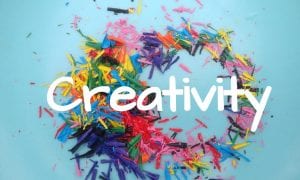Creative Thinking
 “The student uses information in original and novel ways, demonstrating new ideas and ways of doing things.”
“The student uses information in original and novel ways, demonstrating new ideas and ways of doing things.”
Project-based learning and service-learning “offers creative freedom, which gives the students a sense of agency, purpose, and bring even more relevance to learning – engaging them in making an impact in their community and exposing them to local careers. Not only do authentic, community-focused tasks prepare students for what they may encounter as an adult, but it also empowers them to think creatively, work together, think about their future, and above all, learn to be upstanding citizens who care about others.”1
Through our CivicTREK projects, we are helping our students meet the Five C’s goals from Profile of a Virginia Graduate such as creativity.
How can we encourage students to:
- Think creatively, brainstorming to design and test new ideas while analyzing, evaluating, and refining original ideas?
- Work creatively with others, being open and receptive to new and diverse perspectives?
- View creativity as constructive experimentation, and failure as an occasional part of the process; and to
- Apply the design process and digital tools to develop tangible and useful products and solutions to their identified community problem?
The following short video (3:07 minutes) features motivational speaker James Taylor, who suggests teaching students a process called The Five Why’s. Following this strategy, students will be better able to link their understanding of the need for their project – the community need to which they are responding – with a series of brainstorming experiences that will engage them in thinking through creative and innovative solutions.

A Creative Activity:
Ask students to consider designing a logo for their project, something that could be used during their Demonstration event. Following the Five Why’s process outlined in the video will give them a good start on understanding the need they are addressing, and help direct their design considerations.
Suggest that students research the process of designing a logo – this web site is just one that could be helpful, and Canva provides a web platform that students over age 13 can use for free. For students under age 13, be sure to get parent permission before having students create an account. Google Draw can also be a great virtual space for students to design their own logo.